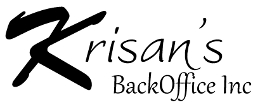
Thanks to the Emergency Economic Stabilization Act of 2008, custodians and broker-dealers are required to report the adjusted cost basis of sold securities to the IRS and taxpayers on Form 1099-B — including whether the gain/loss is short or long term.
[pullquote align=”right”]How will your clients value your services if the PortfolioCenter report you give them contains numbers that conflict with the numbers your broker sent the IRS?[/pullquote]While taxpayers remain responsible for reporting accurate cost basis for sold securities on their tax returns, your broker will now report cost basis to the IRS on equities acquired on or after January 1, 2011 and mutual funds, ETFs and dividend reinvestment plans (DRIPs) acquired on or after January 1, 2012. The 1099s containing 2012 tax data will be the first that include mutual funds and ETFs — which typically comprise the bulk of investments.
How will your clients value your services if the PortfolioCenter report you give them contains numbers that conflict with the numbers your broker sent the IRS? Especially if your clients fail to realize the numbers differ until the IRS comes knocking at their door threatening penalties and interest?
If you have been “asleep on the railroad tracks” ignoring cost basis, the rapidly closing window between now and the date brokers issue 2012 1099-Bs may be your last chance to avoid a train wreck. It’s time to wake up.
First, determine whether PortfolioCenter or your broker has the most complete and accurate cost basis.
- Post and reconcile your data.
- Run a Cost Basis Reconciliation report.
- If you see lots of zeros under “Cost Basis” (6th column), the broker is missing cost basis and PortfolioCenter is likely the more accurate system.
- If you see lots of zeros under “PortfolioCenter Cost Basis” (7th column), PortfolioCenter is missing cost basis and the broker is likely the more accurate system.
- If you see different numbers in the two cost basis columns, you’ll need to do some sleuthing to determine which is most accurate. (Tip: if the numbers are reasonably close, go with the broker’s numbers.)
- If you see zeros in both cost basis columns, you’re in trouble.
Resources:
Schwab Performance Technologies Cost Basis Legislation Overview
TD Ameritrade Cost Basis information
Fidelity Institutional Wealth Services Cost Basis Overview
T.Rowe Price Cost Basis Accounting & Calculation

